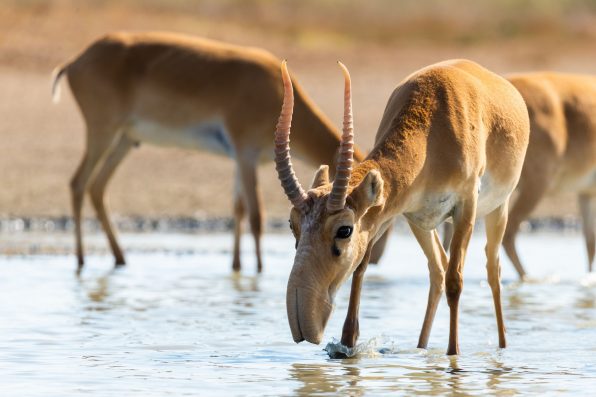Once upon a time, the strange and majestic saiga antelope roamed across the steppes of Central Asia in large herds consisting of over a million members. The saiga is well adapted to the harsh conditions of the remote areas it inhabits.
However, the animals were no match for the dangers that humans presented. Due to widespread hunting, they were nearly driven to extinction.
In the past, saiga antelopes populated stretches of land from Hungary to northeast China.
Nowadays, they are confined to Kazakhstan. It is believed that over 90 percent of the saiga antelope population lives in Kazakhstan. The rest are found in Russia, Mongolia, and Uzbekistan.
The saiga antelope’s most notable characteristic is its big, bulbous nose. This feature allows it to survive in the dry, hot environment of its habitat.
The nostrils filter out dust and cool down body temperature in extreme heat. In the winter, the nostrils help warm up the cold air before it reaches the lungs. When summer rolls around again, the saiga sheds its thick winter coat.
The biggest threat to saiga is poaching. Their horns, skins, and meat have always made them a target for hunters. Their horns are widely used in traditional medicine practices.
In the 1990s, the poaching of saiga reached an all-time high after misguided efforts to turn hunters away from threatened African rhinos. By 2005, there were only 48,000 saigas left.
According to the Wildlife Conservation Network, the saiga antelope has made a comeback in Kazakhstan with the help of conservation initiatives.

Sign up for Chip Chick’s newsletter and get stories like this delivered to your inbox.


